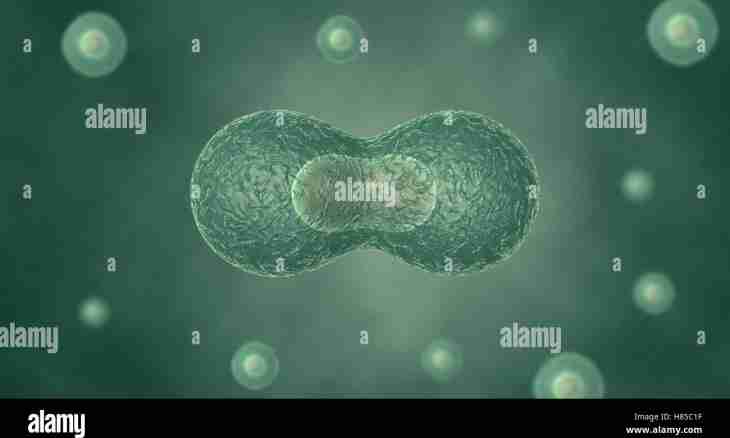The cage is an elementary living system, a component of any organism. It is unit of transfer of hereditary information. Exactly thanks to process of cellular division the reproduction and development of all organisms is carried out.
Cell division is the vital process at which of one maternal cage several affiliated is formed, with the same hereditary information, as at a parental cage.
Life cycle of each cage still is called a cellular cycle. In this period it is possible to allocate stages: interfaza and division.
Interfaza - the period of preparation of a cage for division. This time is characterized by the strengthened exchange processes, accumulation of nutrients, synthesis of RNA and protein and also growth and increase in the sizes of a cage. In the middle of this period there is a replication (doubling) of DNA. After that preparation for division begins: centriol and other organelles double. Duration of an interfaza depends on a kind of cages.
After a preparatory phase the division begins. Cages of ekariot have several ways of this process: for somatic cages – amitotic division and a mitosis, for sexual - meiosis. Amitotic division is a direct cellular division at which chromosomes do not change the state, the spindle of division is absent, the kernel and a nuclear cover do not collapse. In a kernel partitions are formed or it pereshnurovyvatsya, division of cytoplasm does not happen and as result, the cage turns out two-nuclear, and at further continuation of process – multinuclear. Indirect cell division is called a mitosis. At it there is a formation of cages identical on the set of chromosomes with maternal and, thereby, constancy of any given type of cages among generations is provided. The mitosis is divided into four phases: professional azu, metaphase, anaphase and telofaza. At the first stage the nuclear cover vanishes, there is a spiralling of chromosomes, the division spindle is formed. In a metaphase of a chromosome move to the equatorial zone of a cage, threads of a spindle of division join centromer of chromosomes. In an anaphase the sisterly hromatida of chromosomes disperse to cage poles. Now at each pole becomes as much chromosomes how many was in an initial cage. Telofaza is characterized by division of organelles and cytoplasms, chromosomes are untwisted, the kernel and a kernel appears. On the center of a cage the membrane is formed, and there are two daughter cells exact copies of maternal. Meiosis – process of division of gametes of which formation of the gametes containing a half of a set of chromosomes from initial is result. For it the same stages, as for a mitosis are peculiar. Only meiosis consists of two divisions going at once one after another and as a result it turns out not 2, but 4 cages. Biological point of meiosis – formation of haploid cages which connecting become diploidic again. Meiosis provides constancy of a set of chromosomes at sexual reproduction, and various combinations of genes promote increase in a variety of signs at organisms of one look. Cell fission prokariot has the features. So nuclear-free organisms at first have a splitting of a maternal chain of DNA, to the subsequent creation of complementary chains. During division two formed molecules DNA disperse, and between them the membrane partition is formed. As a result two identical cages turn out, each of which contains one chain of maternal DNA and one again synthesized.

